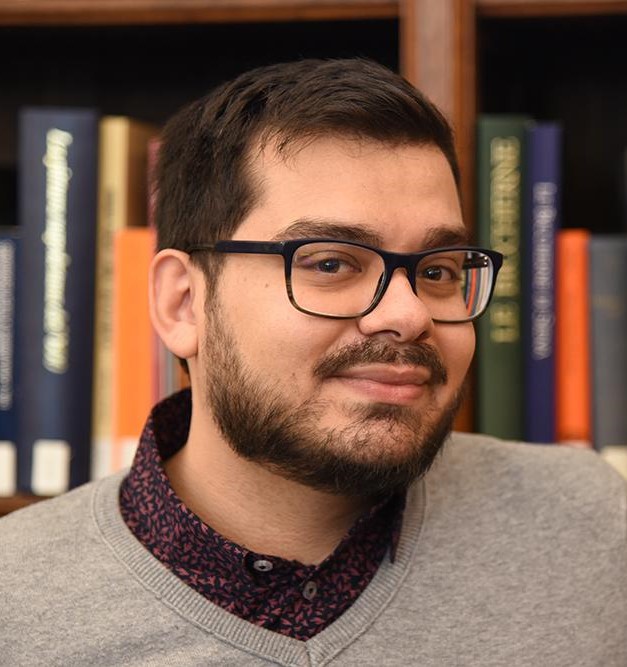KNIR Column L’etrusco che è in noi
I am Daniele Di Cola and I am KNIR Fellow from October 2020 till August 2023. I studied art history at Sapienza University of Rome, where I obtained my PhD with a dissertation on the American art historian Leo Steinberg (1920-2011). In 2018, during a fellowship at the Centre André Chastel in Paris, I developed my current post-doctoral research on the French critic and art historian Gustave Soulier. I have been fellow at several institutes, including the Bibliotheca Hertziana in Rome (2019) and Villa I Tatti, The Harvard University Center for Italian Renaissance Studies, in Florence (2020). My interests concern the historiography of Renaissance Italian art in 19th and 20th century, with a specific focus on art historians who worked on both Renaissance art and Modern art.
My research project at the Institute focuses on the life and work of Gustave Soulier (Bordeaux 1872 – Naples 1937) and his book Les Influences orientales dans la peinture toscane, published in 1924. In this text, the first to focus entirely on the impact of Islamic and Far Eastern art on Tuscan art, Soulier rejected the notion that Greco-Roman art, with its imitative and naturalistic qualities, was absolutely central to the formation of Italian art, especially of the Renaissance. He instead proposed alternative and more ancient sources, including “Oriental” and Etruscan art. In this way Soulier contested the myths of autochthonous origins of art, usually emphasized by nationalistic theory of his time. My project considers Soulier’s writings in order to reconstruct his thinking, exploring his intellectual sources and artistic and cultural milieu, including unpublished materials. The result of this research will be part of my monographic book on Soulier and his interpretation on Italian art which will appear in 2022.
Publication list
“Il rifacimento della Chiesa di Santa Barbara dei Librai di Roma (1679-1688). Il committente Zenobio Masotti e l’attività artistica di Agostino Martinelli, Giuseppe Passari, Luigi Garzi e Domenico Guidi,” Bollettino d’arte, 24 (2014), pp. 125-142; “Le ragioni dello stile. La critica di Pasquarosa Marcelli Bertoletti e Margherita Osswald-Toppi, modelle e pittrici anticolane,” in M. Carrera (ed.), Le muse di Anticoli Corrado, Cat. Exhibition, De Luca (Rome: 2017), pp. 9-17; “Disegno e danza «guide migliori dell’erudizione». Esperienze e metafore del corpo nel pensiero di Leo Steinberg,” in C. Di Bello, R. Gandolfi, M. Latella (eds.), In corso d’opera (2), Campisano Editore (Rome: 2018), pp. 295-302; “Gustave Soulier et Les Influences orientales dans la peinture toscane (1924). Le ‘sentiment décoratif’ dans l’art italien de la Renaissance face à la modernité,” Revue ArtItalies, 25 (2019), pp. 61-70; “Leo Steinberg e un libro inedito su Mantegna. Presenze e assenze del corpo di Cristo,” in A. Buoniconto, R. Cesaro, G. Salvati (eds.), Spazi Bianchi. Le espressioni letterarie, linguistiche e visive dell’assenza, Rubbettino (Soveria Mannelli, CZ: 2019), pp. 399-411; Introductory note to “Retracing: Leo Steinberg’s lecture on Michelangelo’s Creation of Adam,” in T. Casini (ed.), Sistina e Cenacolo. Traduzione, citazione e diffusione, Editoriale Artemide (Rome: 2020), pp. 159-161, 200; “Becoming Leo. Steinberg e l’Institute of Fine Arts di New York: dell’eredità dei professori tedeschi allo sviluppo di un nuovo criticism,” Storia della critica d’arte. Annuario della S.I.S.C.A., 2020, pp. 65-97; “Forms of Reconciliation: Leo Steinberg on the Beholder (1959-1972),” in G. Cassegrain, C. Cieri Via, J. Koering, S. Schwartz (eds.), Leo Steinberg Now. Il pensiero attraverso gli occhi, Campisano Editore (Rome: 2021), forthcoming; L’arte come unità del molteplice. La vita e il pensiero critico di Leo Steinberg (1920-2011), De Luca (Rome: 2021), forthcoming.
